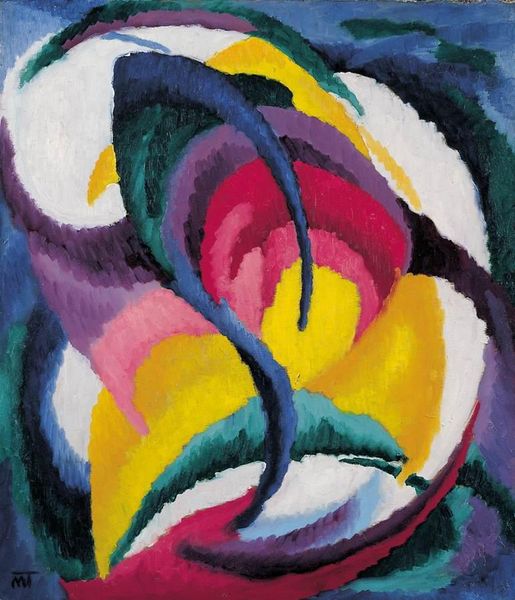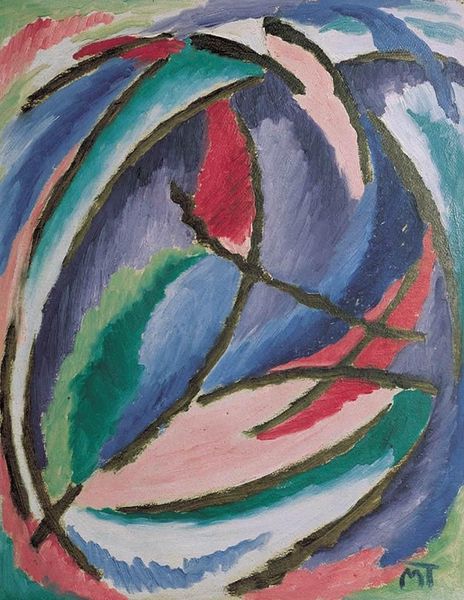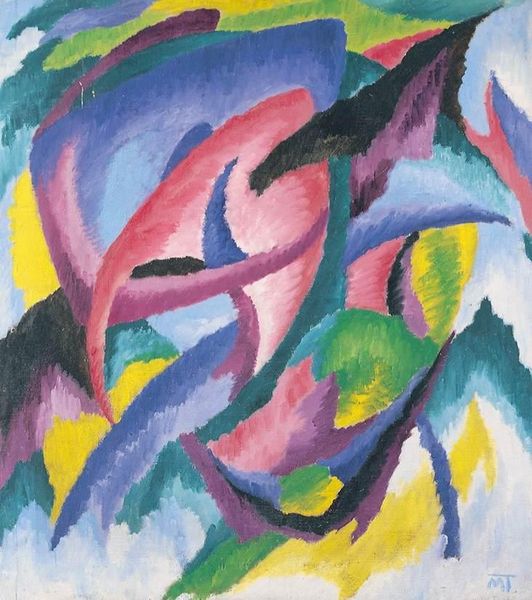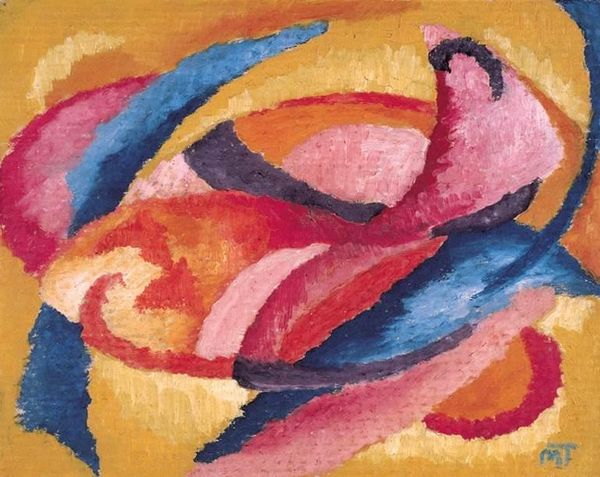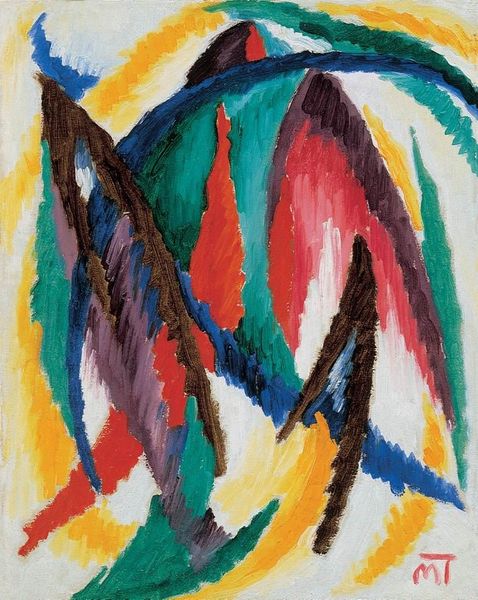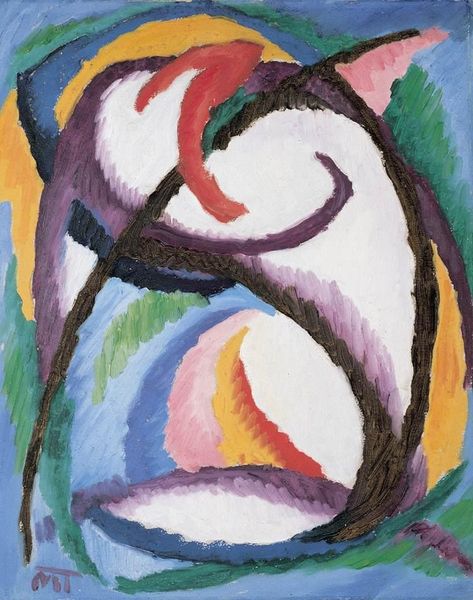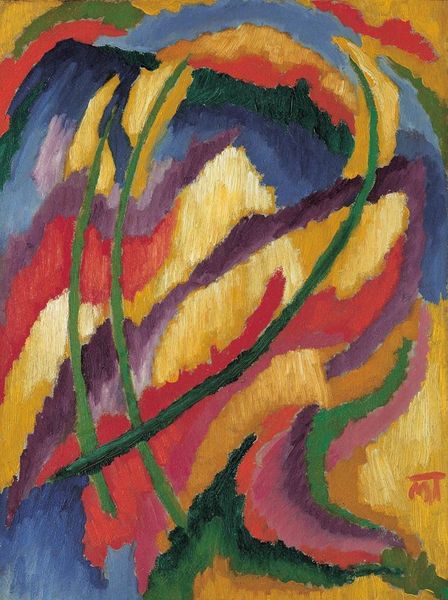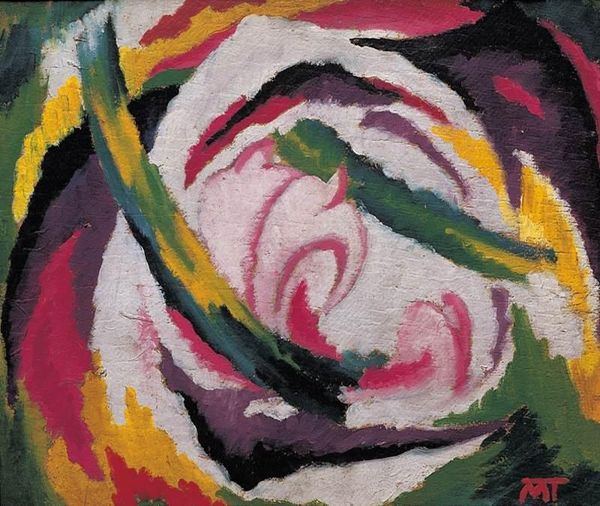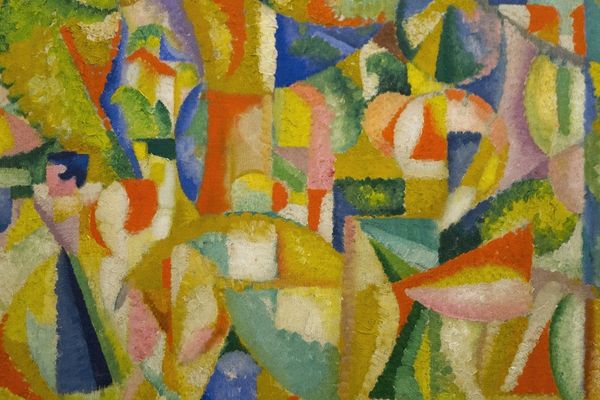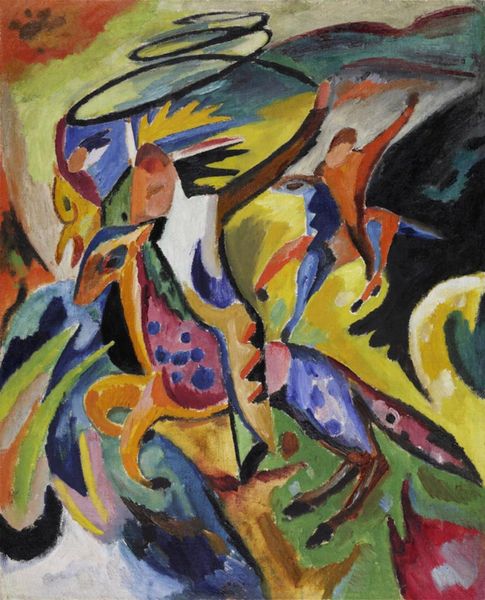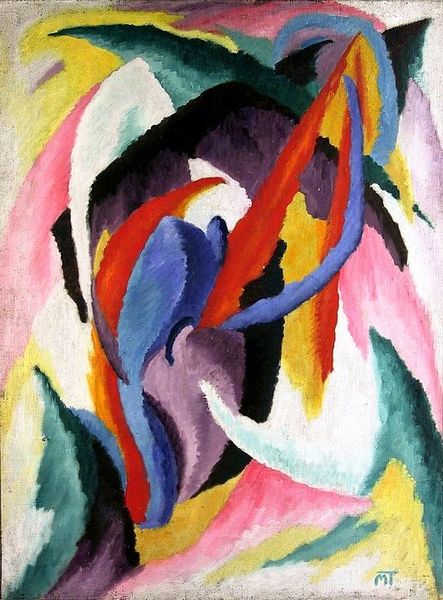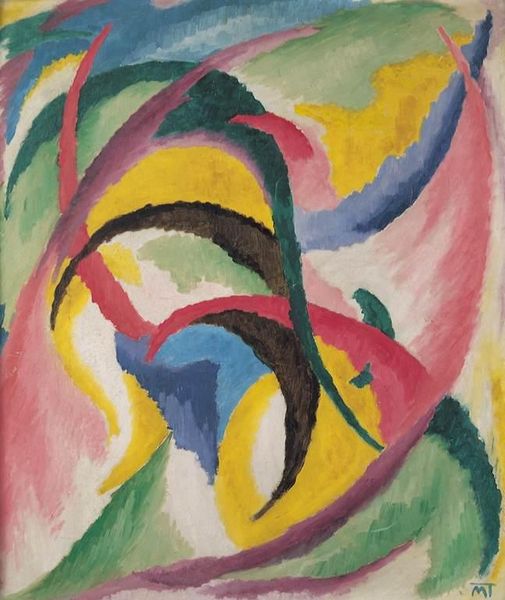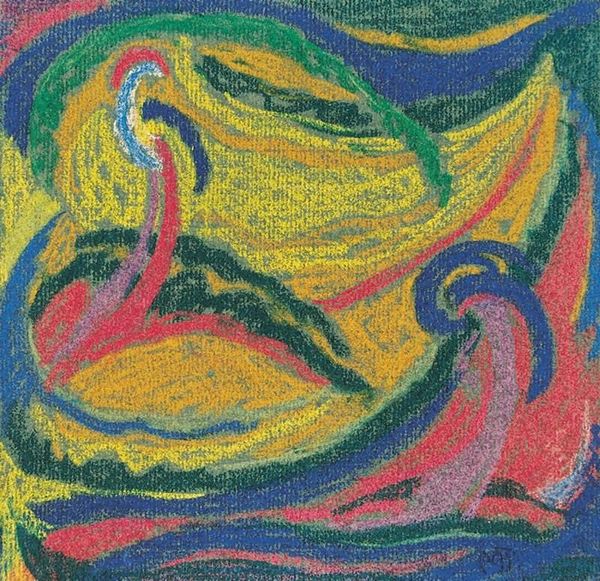
Copyright: Public domain US
Curator: Take a moment to cast your eye on "Composition," a rather vibrant oil on canvas created around 1920 by János Mattis-Teutsch. It’s a jewel of early abstract expressionism. What springs to mind for you when you look at it? Editor: Energy, definitely energy. A playful whirlwind of color. It's joyous but a little chaotic too, like looking at a garden through a kaleidoscope after one too many glasses of wine. Is that just me? Curator: No, not at all! Mattis-Teutsch aimed to represent the spiritual through form and color. Those curved lines, for example, recurring throughout his work, evoke a sense of upward movement, a striving for something beyond the material. Do you see how those color fields seem to almost vibrate against one another? Editor: They do dance! The fauvist influence really shines here – bold, unmixed pigments bumping against each other to create optical effects. The recurrence of these blues in particular—the color of spirituality and revelation throughout ages. It gives it this sense of seeking... a question mark made of color. Curator: Precisely. Consider the historical context as well. In 1920, after the trauma of World War I, there was a strong desire to create something new, something pure, free from the constraints of the past. This artwork certainly reflects that yearning, even down to how forms suggest movement from one state to another. Editor: It does feel like the moment just *before* something. That bright pink shape nestled in the center looks almost embryonic. The painting hints at emergence, like the birth of a new visual language. Curator: An excellent observation. The way he used colors isn't haphazard; they work in harmony, suggesting balance but also highlighting tension through juxtaposed pigments. The darker areas too play a part in enhancing our perception—creating both weight and depth. Editor: Yes, it really emphasizes this feeling of inner worlds becoming visible. He's communicating not just with color but with these shapes as stand-ins for complex ideas or sensations...It invites us to project our own understanding into this vortex. Curator: Well put. It feels appropriate that an artwork named simply "Composition" is less a declaration and more an invitation. An abstract doorway. Editor: Indeed. So, in the end, maybe we aren't viewing the chaotic garden but actually a key to it. The wine *might* still help.
Comments
No comments
Be the first to comment and join the conversation on the ultimate creative platform.
